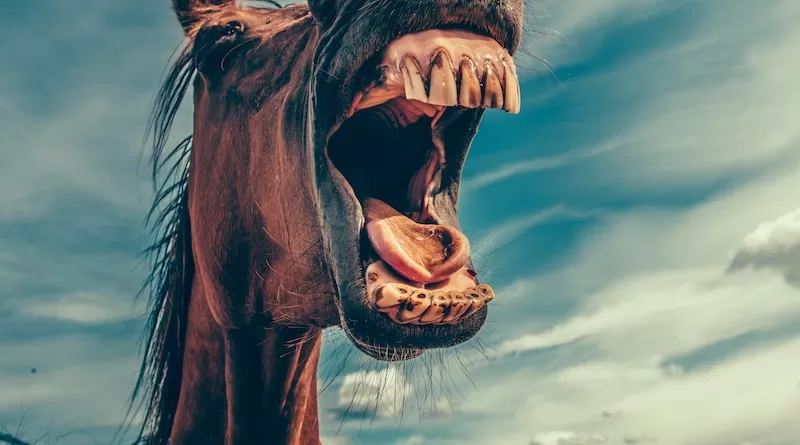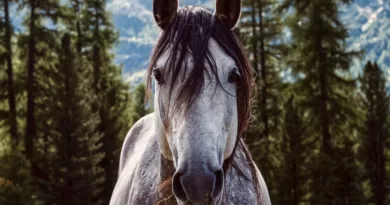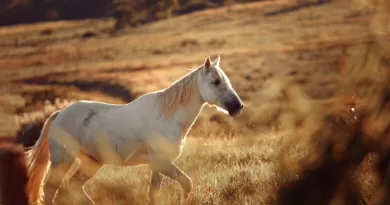What Is a Cold Blood Horse
The Origins of Cold Blood Horses
One of the earliest records of cold blood horses can be traced back to ancient times. These mighty creatures were believed to have descended from the heavy warhorses used by various ancient civilizations. They were known for their strength and endurance, making them essential assets in warfare and agricultural pursuits. Over the centuries, their abilities were recognized and sought after, leading to the development of distinct breeds that have their origins deeply rooted in history.
The exact origins of cold blood horses remain somewhat mysterious, as the passage of time has blurred the details. However, it is widely accepted that their development can be attributed to the careful breeding and crossbreeding practices employed by breeders and horse enthusiasts. These practices aimed to enhance specific traits, such as strength, size, and temperament, resulting in the unique characteristics that distinguish cold blood horses from other equine breeds. With their storied history and fascinating evolution, cold blood horses continue to captivate and inspire admiration even in modern times.
Physical Characteristics of Cold Blood Horses
Cold Blood Horses exhibit several distinct physical characteristics that make them easily recognizable. Firstly, their build is sturdy and strong, with a muscular frame and a broad, powerful chest. They have a heavy bone structure and overall robustness, which contributes to their ability to endure physically demanding tasks. The legs of Cold Blood Horses are thick and robust, providing them with a strong foundation and stability during activities such as pulling heavy loads or plowing fields.
In addition to their muscular build, Cold Blood Horses also have distinctive facial features. Their heads are often large, with broad foreheads and expressive eyes that convey a sense of intelligence and curiosity. Their ears are typically medium in size and well-set, enhancing their alertness and ability to pick up sounds from their surroundings. Interestingly, Cold Blood Horses also have a thicker neck and a thick, flowing mane and tail, adding to their overall majestic appearance. These physical characteristics combine to create a breed that exudes strength, power, and poise.
Cold Blood Horses vs. Warm Blood and Hot Blood Horses
Cold blood horses, warm blood horses, and hot blood horses are three distinct categories within the equine world, each characterized by its unique set of physical and temperamental traits. Cold blood horses, also known as draft horses or heavy horses, are known for their power and strength. These gentle giants possess a calm and docile temperament, making them ideal for tasks that require immense pulling power such as agriculture and hauling heavy loads. Their immense size and sturdy build set them apart from their counterparts.
On the other hand, warm blood horses are a combination of the best characteristics of both cold blood horses and hot blood horses. They possess the strength and power of a cold blood horse combined with the agility and intelligence of a hot blood horse. Warm blood horses are versatile animals that excel in a range of equestrian disciplines, including dressage, jumping, and eventing. Their friendly and willing nature makes them highly trainable and suitable for riders of various skill levels.
In contrast, hot blood horses are known for their energy, endurance, and speed. These breeds, such as Thoroughbreds and Arabians, are characterized by their light and elegant frames, long legs, and refined heads. Hot blood horses are spirited and high-spirited creatures, making them ideally suited for disciplines such as racing and endurance riding. Their natural athleticism and fiery nature make them thrilling to watch and ride, but they require skilled handling and training to harness their energy effectively.
Breeds of Cold Blood Horses
The breeds of cold-blooded horses encompass a diverse range of equine species known for their strength and stamina. One such breed is the Belgian Draft Horse, originating from Belgium and often recognized for its imposing size and gentle temperament. Renowned for their pulling power, Belgian Draft Horses have been utilized in agriculture and logging tasks, demonstrating their ability to tackle heavy workloads with ease.
Another notable cold-blooded breed is the Shire Horse, a majestic and muscular equine originating from England. These horses are known for their immense size, with some individuals reaching heights of over 18 hands. Shire Horses possess an elegant appearance, characterized by their feathering on the lower legs and a distinct Roman nose. Historically, Shire Horses were utilized for agricultural activities and pulling heavy loads, but in modern times, they are also gaining popularity in the show ring and as gentle giants for leisure riding.
Cold Blood Horses in History
During ancient times, cold blood horses played a significant role in shaping the course of human history. These majestic creatures were often used as an integral part of various civilizations, aiding in transportation, heavy labor, and even warfare. Their power and strength on the battlefield were unparalleled, and their ability to endure harsh conditions made them invaluable assets to conquerors and empires.
In medieval Europe, cold blood horses continued to play a crucial role in various aspects of society. They were utilized in agriculture, helping with plowing fields and carrying heavy loads. Additionally, they were employed in the development of towns and cities, as their strength was essential in the construction of buildings, roads, and other infrastructure. Being dependable and hardworking, cold blood horses were highly coveted by both nobility and commoners alike, symbolizing wealth and prosperity.
The Temperament and Personality Traits of Cold Blood Horses
Cold blood horses are known for their calm and gentle nature, making them the ideal companions for riders of all experience levels. These horses possess a remarkable level of patience and are often described as easygoing and docile. Their temperament makes them well-suited for various activities, such as trail riding, recreational riding, and therapy programs. Due to their steady and reliable nature, cold blood horses are often praised for their ability to remain composed in stressful situations.
In addition to their calm demeanor, cold blood horses are recognized for their friendly and sociable personalities. They tend to be affectionate and enjoy human interaction, often forging strong bonds with their owners and caretakers. This sociability also extends to other horses, as cold bloods are known to get along well with fellow equine companions. Their amiable nature makes them a popular choice for those seeking a horse that is not only easy to handle but also enjoys forming connections with both people and animals alike.
Common Uses and Jobs for Cold Blood Horses
Cold Blood Horses have been used for various tasks throughout history due to their strength and docile nature. One of the common uses for these horses is in agricultural work. Their gentle disposition and ability to handle heavy loads make them ideal for pulling and plowing fields. Cold Blood Horses have been relied upon for centuries to perform arduous tasks such as transporting timber, working in vineyards, and even pulling carriages and wagons.
In addition to their role in agriculture, Cold Blood Horses have also been utilized in forestry. Their sturdy build and sure-footedness make them well-suited for navigating through rough terrains and carrying large loads. These horses are often used to transport logs from forests, assisting in the logging industry in many regions. Their strength and endurance make them valuable assets in this physically demanding line of work.
Training and Care of Cold Blood Horses
Proper training and care are essential for the overall well-being and performance of cold blood horses. These majestic creatures require a balanced and consistent approach to their training, taking into consideration their unique characteristics and temperament. When it comes to training cold blood horses, patience and understanding are key. These horses are known for their calm and gentle nature, which can sometimes be misconstrued as laziness or stubbornness. However, it is important to remember that they have a more deliberate and steady work ethic compared to their warm blood and hot blood counterparts.
In terms of care, cold blood horses benefit from regular grooming and maintenance routines. Their thick, heavy coats require frequent brushing to remove dirt and debris, particularly during the winter months. It is also important to pay close attention to their feet as cold blood horses are prone to certain hoof conditions. Routine farrier visits and proper hoof care are essential to ensure their optimal health and soundness. Additionally, a balanced diet and ample access to clean water are vital components of their care routine. Taking these factors into consideration will not only contribute to the overall health and well-being of cold blood horses, but also enhance their performance and longevity.
Cold Blood Horses in Modern Times
In the modern times, cold blood horses continue to play important roles in various industries and activities. Thanks to their strength and endurance, they are often utilized in agricultural work, such as plowing fields and pulling heavy loads. They are also commonly involved in forestry, helping with tasks like hauling logs and clearing land. Additionally, cold blood horses are frequently used for recreational purposes, such as leisurely trail riding or participating in traditional equestrian events like carriage driving. Their calm and steady demeanor make them ideal for beginners or those seeking a more relaxed and enjoyable riding experience.
Furthermore, cold blood horses have found their way into the world of therapy and rehabilitation. Equine-assisted therapy programs have recognized the therapeutic benefits that these gentle giants can offer individuals with physical or mental disabilities. The calm and soothing presence of a cold blood horse can help promote relaxation, improve body awareness, and enhance emotional well-being. Their gentle nature and capacity for forming strong bonds with humans make them exceptional companions in these therapeutic settings.
In summary, despite the modern advances in technology and transportation, cold blood horses continue to make valuable contributions in different aspects of today’s society, including agriculture, recreation, and therapy. Their strength, docile temperament, and affinity for human interaction enable them to excel in a variety of roles, while also providing a sense of beauty and grace. As we appreciate their enduring presence, it is vital to recognize the importance of preserving and cherishing these magnificent creatures for future generations to enjoy.
Appreciating the Beauty and Strength of Cold Blood Horses
Cold blood horses possess a captivating beauty that is difficult to overlook. With their strong, muscular build and gentle, kind eyes, they exude a sense of grace and power. Their sheer size and strength make them awe-inspiring creatures to witness, whether they are standing still in a pasture or in motion, showcasing their fluid and rhythmic movements. One cannot help but appreciate the way their muscles ripple and their long, flowing manes and tails dance in the wind. It is this combination of elegance and robustness that truly sets cold blood horses apart from other breeds.
However, it is not just their physical appearance that makes cold blood horses so remarkable; it is also their incredible strength. These horses are known for their exceptional pulling power, which made them invaluable in the past for heavy work such as plowing fields and pulling carriages. Their immense strength allows them to carry heavy loads and endure arduous tasks with relative ease. Yet, despite their considerable size and strength, they possess a gentle and calm temperament, making them suitable companions and partners in various equestrian activities. In their presence, one cannot help but feel a sense of respect and admiration for these majestic animals.
• Cold blood horses possess a captivating beauty with their strong, muscular build and gentle, kind eyes.
• They exude a sense of grace and power, whether standing still or in motion.
• Their muscles ripple and their long manes and tails dance in the wind, adding to their elegance.
• Cold blood horses are known for their exceptional pulling power, making them invaluable for heavy work such as plowing fields and pulling carriages.
• Despite their size and strength, they have a gentle and calm temperament, making them suitable companions in various equestrian activities.
• In the presence of cold blood horses, one cannot help but feel respect and admiration for these majestic animals.
What are cold blood horses?
Cold blood horses are a type of horse breed known for their strength, calm temperament, and ability to work in cold climates.
What are the physical characteristics of cold blood horses?
Cold blood horses are typically heavyset with a muscular build. They have a broad chest, strong legs, and thick, heavy coats to protect them from cold weather.
How do cold blood horses compare to warm blood and hot blood horses?
Cold blood horses are generally larger and heavier than warm blood and hot blood horses. Warm blood horses are a mix of cold and hot blood breeds, while hot blood horses are known for their speed and agility.
What are some popular breeds of cold blood horses?
Some popular breeds of cold blood horses include the Percheron, Clydesdale, Shire, and Belgian Draft.
What is the historical significance of cold blood horses?
Cold blood horses played a crucial role in agriculture, transportation, and war throughout history. They were used for plowing fields, pulling heavy wagons, and carrying knights in battle.
What are the temperament and personality traits of cold blood horses?
Cold blood horses are known for their calm and patient nature. They are typically gentle, reliable, and well-suited for beginners and inexperienced riders.
What are some common uses and jobs for cold blood horses today?
Cold blood horses are often used for draft work, such as pulling carriages, logging, and agricultural tasks. They are also popular for recreational riding and competitive driving events.
How should cold blood horses be trained and cared for?
Cold blood horses respond well to patient and consistent training methods. They require regular exercise, proper nutrition, and regular grooming to maintain their health and well-being.
How are cold blood horses relevant in modern times?
While their traditional jobs have diminished, cold blood horses continue to be valued for their strength, versatility, and beauty. They are still utilized in various industries and remain popular for recreational purposes.
Why should we appreciate the beauty and strength of cold blood horses?
Cold blood horses possess unique qualities that make them invaluable in certain tasks and enjoyable to interact with. Their power and gentle nature deserve recognition and admiration.




